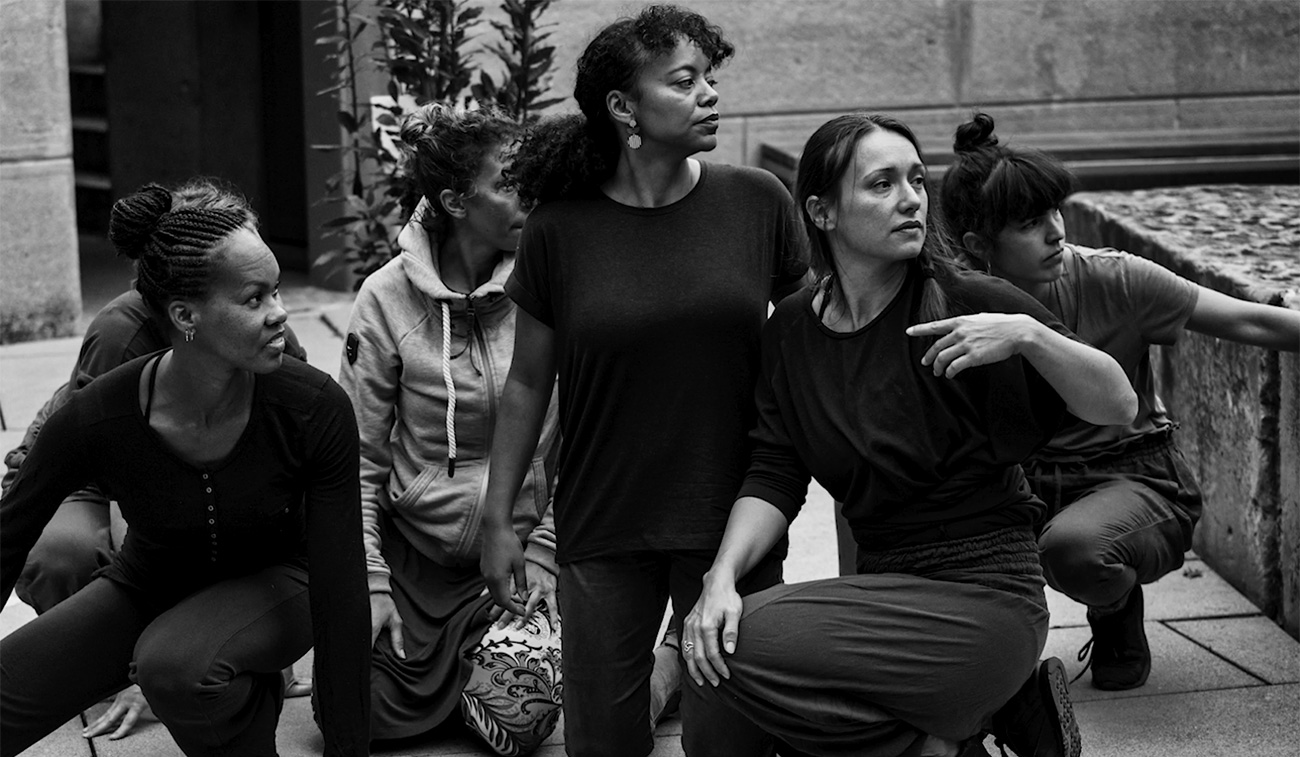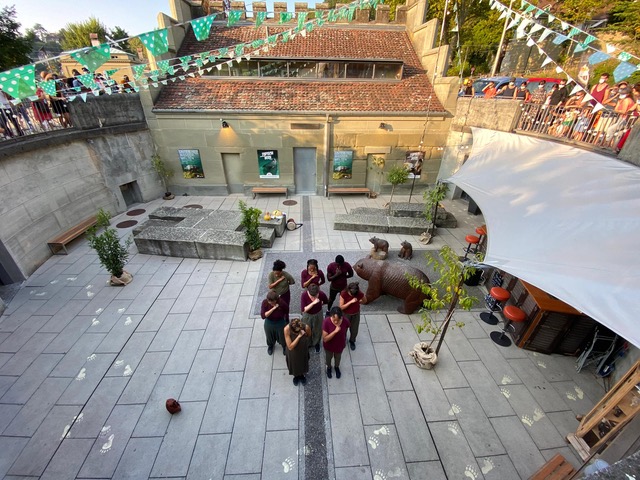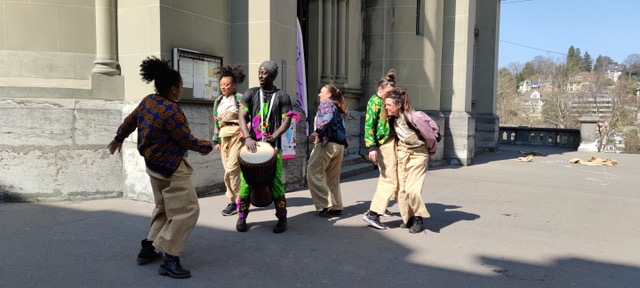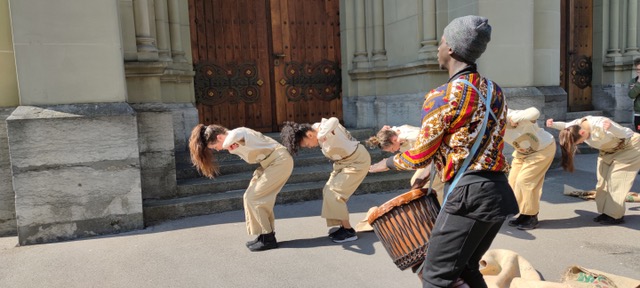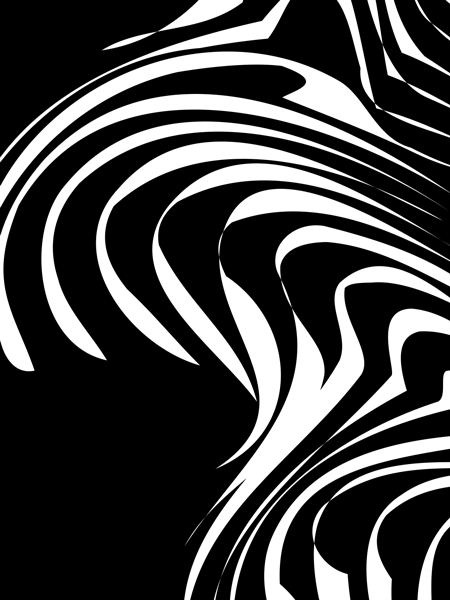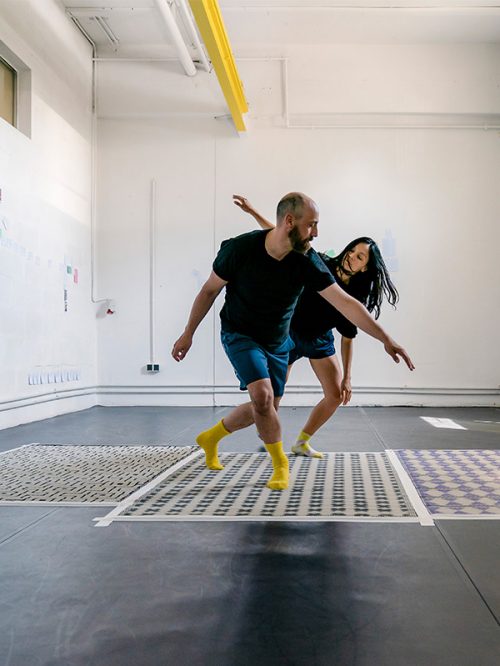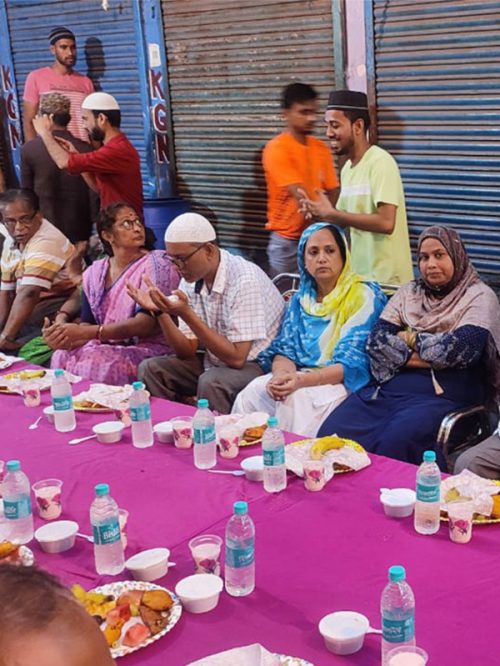Racism in Dance
Often I am asked, “what do you mean?” when I bring up the topic of racism and white privilege in the local dance scene. “In dance there is more diversity than anywhere else! Look around,” I am told reproachfully, “we have dancers from all regions of the world in our companies!”
It is not always easy to deal with the feeling of being the “fouler of my own nest” and a provocateur. To always be the one who points out the so often repressed and – yes, I know – unpleasant topic of racism. Depending on my condition of the day, I may simply decide to remain silent, or not to bring up the subject. This is often also self-protection. I am the only black dancer in the contemporary dance scene of my small, rather rural, hometown in Switzerland.
But more and more often I decide not to keep silent, to push dancers out of their “happyland”. As an introduction to those discussions, I often ask those who are participating in the discussions to dream up the following scenario:
Imagine you are in a darkened room.
Suddenly you can hear music! Do you recognize the groovy off-beat? A person comes into the room. S/he starts to move to the loud music, s/he dances!
You watch the dancing person. Well? Do you feel like dancing? Try to remember this picture and ask yourself the following questions:
Was it difficult for you to imagine the scene described above? If not, why not?
Where/in what space did the scene take place?
Did the space resemble a classical theater stage, for example, a municipal theater stage?
If no, why not? What did the room you imagined look like?
What was the gender of the person dancing? Did you read the person as female? Why?
Was the person who was dancing white? If no, what did she look like? Why?
The following questions are meant for self-reflection, but also as stimuli for further discussions with other people on the topic of racism:
How would you explain the difference between structural and individual racism?
How often have you seen social and club dances like Reggaetòn, Dancehall, Salsa, HipHop, etc. on renowned classical (dance) stages?
Who and what has shaped your present world view, opinions and views?
What did your teachers at school, your neighbors, your dance teachers look like?
Who were/are your role models?
What are your ideals of beauty?
How many BIPoC (Black Indigenous People of Color) and Black performers do you know who have leading positions in the theater?
Look around: How many BIPoC and Black people are in the audience when you perform?
Very often white people feel caught when confronted with such questions, are unsettled and hopefully become aware of the privileges they have as white dance practitioners, even if dance itself is marginalized within the arts. Reactions to these questions and points of discussion vary. Some people avert themselves, others tell me that they too are affected by a wide variety of discrimination and that I shouldn’t act up like this. Others are affected and very unsettled and ashamed about their ignorance or lack of knowledge, so much so that they too turn away from me and avoid me in dance trainings or foyers of theaters. Fortunately, however, there are also the professional allies who ask me for book suggestions and further sources of information, or even ask what they can do as white people to change something about the racist structures in the dance world.
It is these allies who demand that theater directors and performing arts agencies or cultural commissions organize and even pay for workshops on critical whiteness and racism for artists and their funders. Such movements within the dance scene and the courage for change and the will to confront one’s privileges give me the strength to continue as an anti-racist activist and dancer and I believe I have planted a first seed for change in my small city.
Where do I draw the strength from, you ask? Well, there is a “safer space”, for me: the collective le cercle essentiel consisting of 5 five black and white women* and two musicians, who have been critically dealing with social issues for 3 years. Through the art form of dance and music, we as a group approach issues of racism, slavery and colonialism and the associated forms of oppression and power. The different personal and artistic backgrounds of the dancers enrich the performance, drawing on different dance styles. The group decides collectively, sets a focus for a production and consults with experts on the focus that has been set. The development of a performance is created by combining contents that have been defined this way and the dancers’ own experiences. The artistic process in dance and music is accompanied by the choreographer Filbert Tologo from Burkina Faso.
In our last production “Résisdance!” we set out to trace the effects of the slave trade, colonialism and racism in the old city of Bern. We investigated the influence of the church, the colonial powers, science and were also able to shed light on the role of Switzerland and its involvement in the transatlantic colonial exploitation system as part of our research. This wealth of historical events served as the basis for the dance performance. Le cercle essentiel focuses in particular on an important fact that is often kept secret: the people who were abducted and their descendants were not merely spineless and submissive. Resistance was formed, be it through revolts, suicide on the slave ship, escape, rituals, refusal, dance and music. Or as the poster at a BLM rally read, “Respect my existence or expect my resistance!”

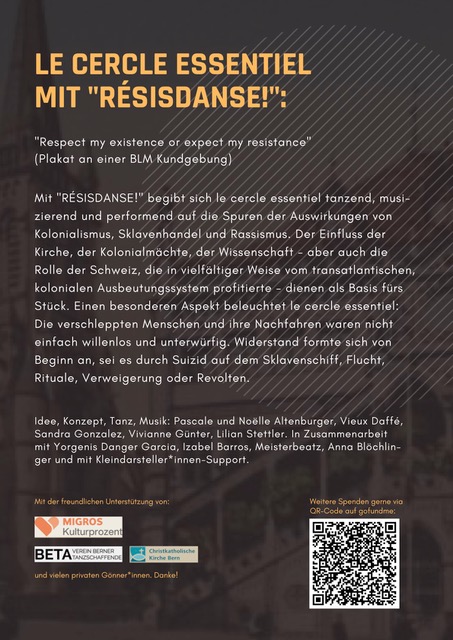
In particular, the performance is intended to make visible how hierarchy can be established just by positioning in space. Who decides which person can move where, what they are allowed to represent? How is the boundary drawn between the own and the other and how is the other denied equal value? People tend to forget how complex this issue really is. When people are discriminated against at school, when looking for a job, during police checks, etc., this is often not simply a coincidence, but has to do with structural racism that is built into processes and routines – and thus does not seem to be noticed at all. With our piece we want to sensitize, among other things through the positioning of the audience, through our own experiences and by triggering feelings, to perceive the topic (more consciously), to reflect and in the best case to act.
As a dancer affected by racism myself, I feel a kind of catharsis on a physical and mental level when I can express myself through dance on such charged issues as the slave trade and colonialism. I also feel that the audience is emotionally touched by the performance and thus stimulated to think and question. Dance offers an alternative way of expression in a debate dominated by language. Through dance, the body is placed in the center; the body that has to endure the violence of racism and colonialism in all its forms.
Suggested Citation
Altenburger, Pascale. 2022. “Racism in Dance“ In: Moving Interventions 2: Between Non-cooperation and Community-building Practices of Resilience in dance – through dance – because of dance, December 2022. Edited by / Herausgegeben von: Sarah Bergh and Sandra Chatterjee, with Ariadne Jacoby (CHAKKARs – moving interventions), translated into English by: Sandra Chatterjee. Published by /veröffentlicht von CHAKKARs – moving interventions.
About the author
I am a dancer, choreographer and dance facilitator living in Bern (Switzerland). Dance has been my great love since my earliest childhood and has remained so until today.
In the course of my life I was trained in classical ballet, jazz and modern dance, Afro, Salsa and contemporary dance. During a longer stay in New York I was able to discover the groove, the energy, the sense of community and the different facets of dance in the HopHop culture: I had arrived “at home”!
I know dance from the perspective of stage dancer, choreographer, facilitator, dancing down in the club and dance and theater studies.
The collective le cercle essentiel is made up of 5 Five Black and White women* and two musician:s who have been critically examining issues in society for the past 3 years. Through the art form of dance and music, the group is currently trying to approach the topic of racism and colonialism, among other things, in the form of oppression and power. The different personal and artistic backgrounds of the dancers lead to enriching the performance with different dance styles. The group decides in a collective way, sets a focus for a production and informs itself about the set focus with experts. The development of a performance is complemented by the focused content and the dancers’ own experiences. The artistic process in dance and music is accompanied by a professional choreographer.


